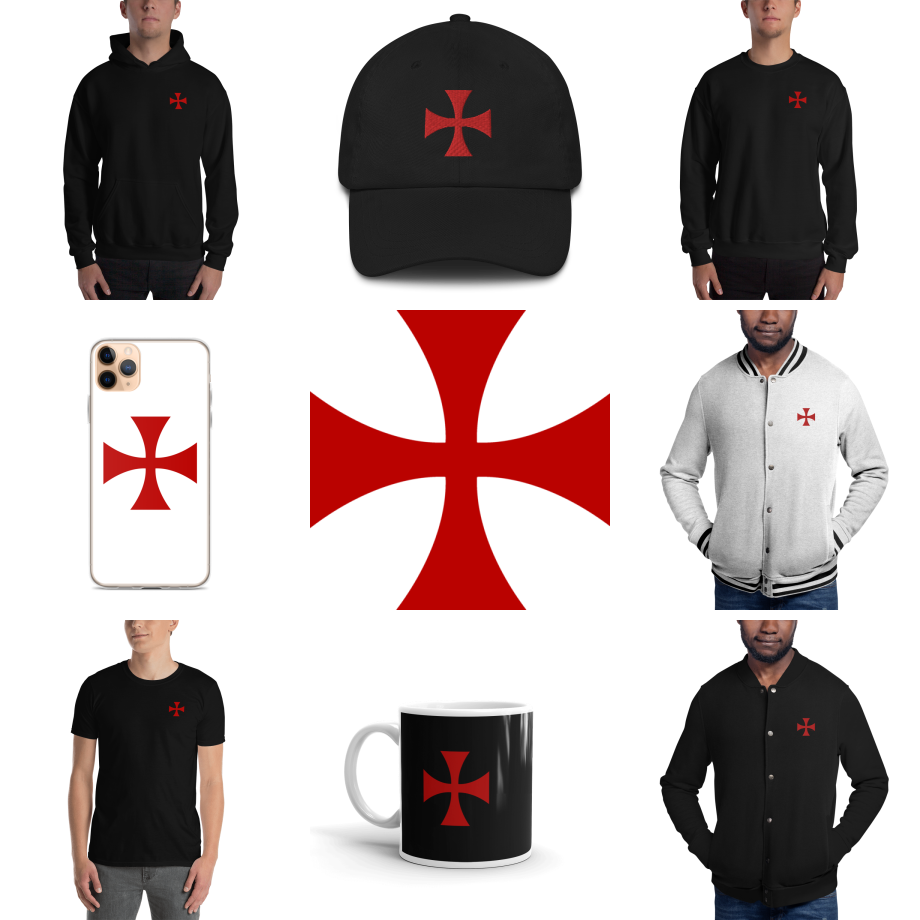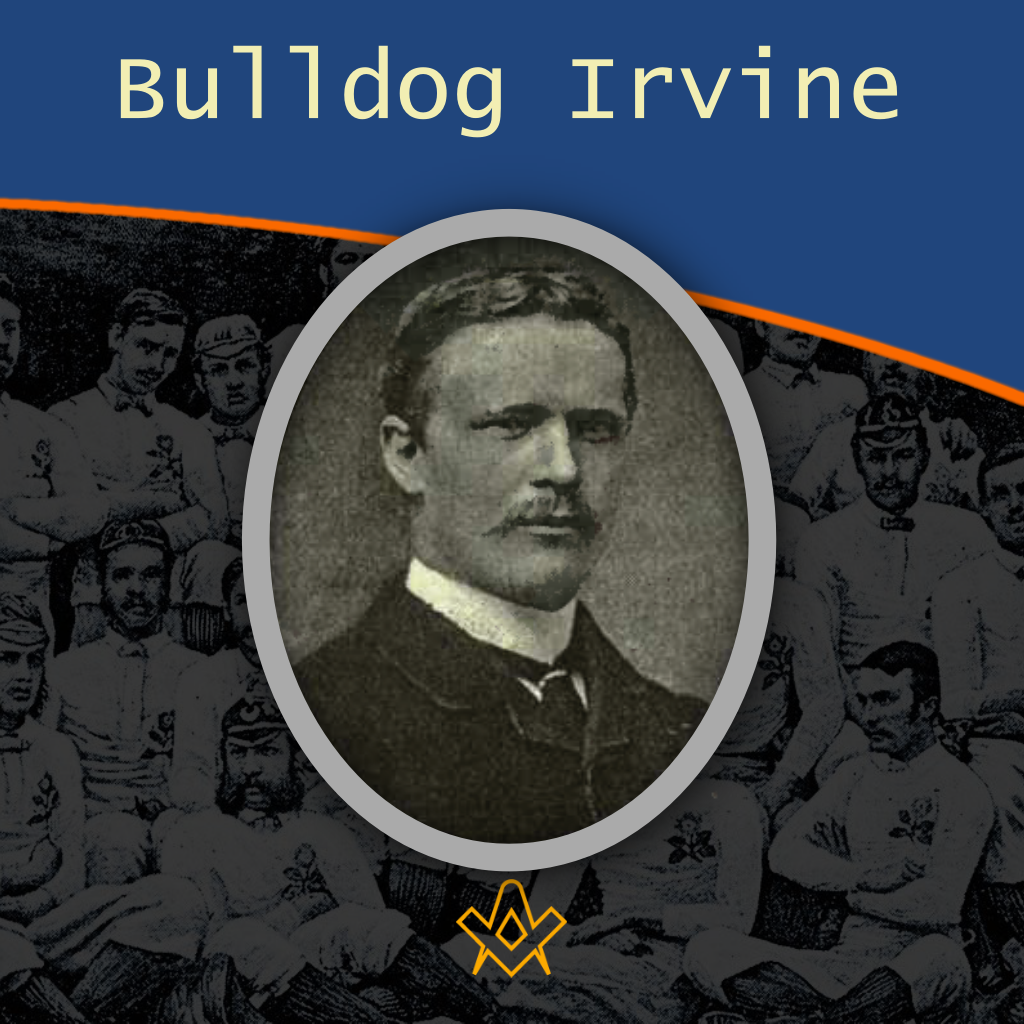Little known as a Freemason, Bro Dr Robert ‘The Bulldog’ Irvine remains a Scottish rugby legend, and his feat of appearing in 10 consecutive international matches against England has only been surpassed once in 140 years by Sandy Carmichael.
Robert William Irvine was born on 19 April 1853, the third son of Alexander Robertson Irvine (1806-1867) a Minister in Blair Atholl, Perthshire, and his wife Sophia Robertson.
Robert had three sisters: Elizabeth, Clementina and Jane, and two brothers: Alexander and Duncan. Both his parents came from long established Highland Perthshire families.
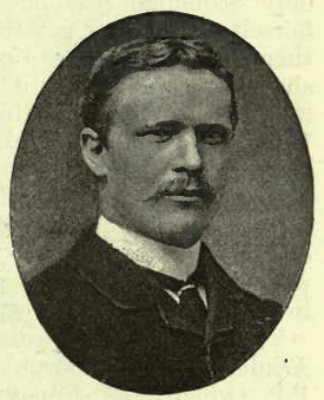
Robert William Irvine
IMAGE LINKED: wikimedia Attribution 4.0 International (CC BY 4.0)
Robert was obviously endowed with a keen intellect and attended Madras College in St. Andrews, and Edinburgh Academy, where he learned the game of Rugby Football. It was at college his prowess for the game shone through.
A powerfully built individual, he won the hammer-throwing contest at college, and his imposing presence on the rugby field earned him the nickname ‘The Bulldog’.
In 1871, aged 18 years, and a medical student at Edinburgh University, he earned his first cap for Scotland playing as a forward against England, in what was the first ever international Rugby Football Match.
He went on to earn 13 international caps, playing in all of the first ten international matches against England, as well as three against Ireland, captaining the side on eight occasions.
He scored his only try for his country in the match against Ireland at Ormeau Road, Belfast in 1877, which the Scottish side won handsomely by eight tries to nil.
Irvine’s brother Duncan played alongside him in three internationals and his cousin Thomas was also capped by Scotland.
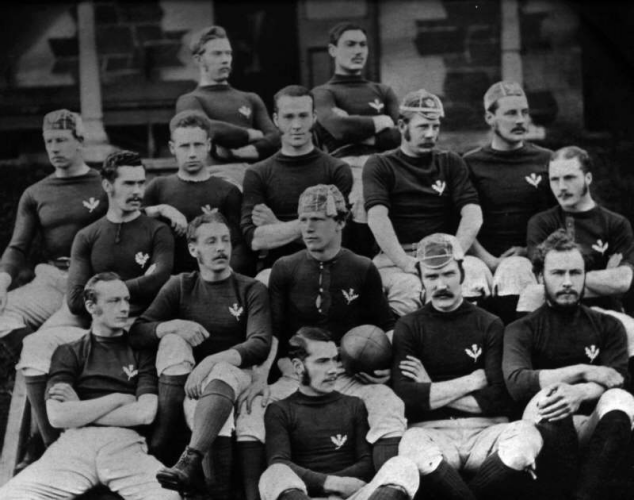
rugby team
IMAGE LINKED: wikimedia Attribution 4.0 International (CC BY 4.0)
The genesis of the first ever Rugby Football match with England is interesting. Rugby aficionados in Scotland heard of rugby matches being played in England which were being billed as England versus Scotland.
It was found that members of the so-called Scottish team were selected from residents in and around London and when it was also learned that the teams were playing to an unknown code, resentment built in Scotland.
Correspondence was sent back and forth and eventually the Scots challenged the English to a proper match. The challenge was accepted and the game was arranged to be played at Raeburn Place, Edinburgh on Monday, 28 March 1871.
Writing on the game years later Irvine stated:
It was twenty a side, and the Scottish forwards were heavy and fast.
We were ignorant what team England would bring, of what sort of players they had, and of how they would play, and though assured by Colville, a London Merchistonian – and a rare good forward too-that we would find their strength, size, and weight not very materially different from our own, many of us entered that match with a sort of vague fear that some entirely new kind of play would be shown by our opponents, and that they would outmanoeuvre us entirely.
Before we had played ten minutes we were on good terms with each other.
Each side had made a discovery: we that our opponents were flesh and blood like ourselves and could be mauled back and tackled and knocked about just like other men; they that in this far North land Rugby player existed who could maul, tackle, and play up with the best of them.
There was one critical time during the match. Feeling was pretty highly strung. It was among the first no-hacking matches for many of the players on both sides.
Now hacking becomes an instinctive action to one trained to it. You hack at a man running past out of reach as surely as you blink when a man puts his finger in your eye.
There was a good many hacks-over going on, and as blood got up it began to be muttered, ‘Hang it, why not have hacking allowed? It cannot be prevented; far better have it.
The question hung in the balance. The teams seemed nothing loth. The captains (Moncreiff and F. Stokes) both looked as if they ought to say ‘No,’ and would rather like to say ‘Yes,’ and were irresolute, when Almond, who was umpire, vowed he would throw up his job if it were agreed to.
So, it was forbidden, and hackers were ordered to be more cautious. The match was won by Scotland by a goal and a try.
The Scots’ goal was placed by Cross (not Malcolm, but his big brother William) from a difficult kick, and though many matches have been played since then between the countries, there has not been one better fought or more exciting than this, the first one.
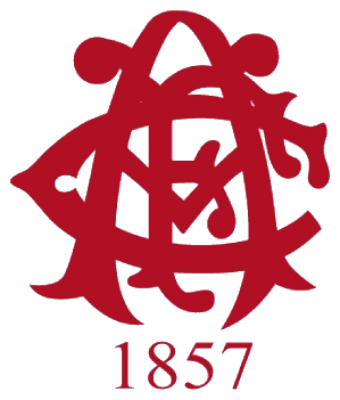
Irvine was also captain of Edinburgh Academicals rugby football club (Accies), and a ‘college chum’ of the renowned Scottish writer, Robert Louis Stevenson.
Stevenson was a rather sickly man throughout his life, and appears to have been no less so in his college days.
In a letter to the Scotsman newspaper many years later, Irvine described Stevenson as being well known to the student athletes, but that he was: ‘a delicate, slim, and marvellously incapable man to enter into the physically active side of university life.’
However, RLS gained much respect by his ‘pure pluck and enthusiasm.’
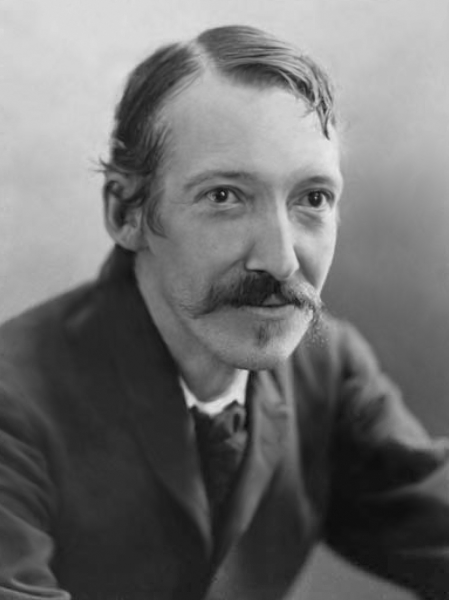
Robert Louis Stevenson, portrait by Henry Walter Barnett, 1893
IMAGE LINKED: wikimedia Attribution 4.0 International (CC BY 4.0)
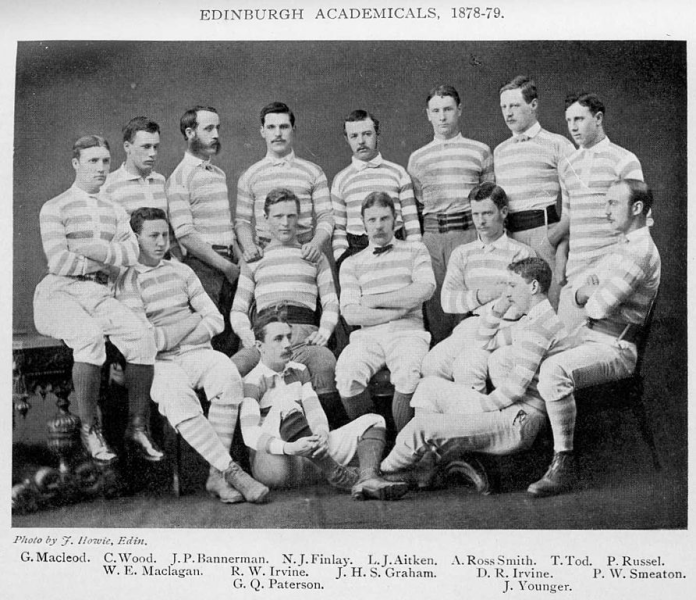
The Edinburgh Academicals (Accies) 1878-79 season
IMAGE LINKED: wikimedia Attribution 4.0 International (CC BY 4.0)
Irvine’s rugby playing career ended in 1880. Of the end of his career, a publication entitled ‘The Story of Scottish Rugby’ had this to say:
R.W. Irvine (‘Bulldog’) played his last match against England in 1880. As a player and organiser and as one of the pioneers in international football, he stands out prominently among the greatest figures in the early days of the game.
He played against England on ten consecutive occasions, and in all representative teams of his time he was among the first to be chosen.
During the last five years of his career he was captain of the Scottish team. But if Irvine’s International experience began in the illuminating blaze of the first victory over England, it ended in disaster at Manchester in 1880.
Scotland were strong favourites before the match, but the team never found their feet, and admittedly were outplayed. Irvine himself blamed his backs, half of whom, he said, might just as well have stayed in Scotland.
Their tackling was weak, but it was well recognised that some of them were not defensive players. The team had no luck. Ninian Finlay twice, and Cross once, just failed to get goals from drops.
The one crumb of comfort for Scotland came in characteristic Masters and Sorley Brown score.
Masters started the run, and Sorley Brown finished it laying the ball behind the posts. The goal which followed, and it was the last Malcolm Cross kicked in International football, was cold comfort. The attendance was a record one, as was also the English score – 2 goals and 3 tries.
Near the close of his rugby playing career, Irvine returned to Pitlochry in Highland Perthshire, where as a medical doctor working in general practice, he became an assistant to his uncle, Dr W. Stewart-Irvine, who was affectionately known to locals as the ‘guid doctor.’
His uncle’s name was later commemorated at the former Irvine Memorial Hospital in Nursing Home Brae, Pitlochry. Robert quickly became a respected and valued member of the community, and one of his many great achievements was to persuade the famous golfer Tom Morris to come up from St. Andrews and design a small golf course on the banks of the River Tummel.
He kept his hand in by playing the occasional game of rugby for the local team in Perth, and as a widely-regarded expert on the game, contributed a regular column entitled ‘Rugby Football and How to Excel in It’ to the ‘Boy’s Own Paper’.
One piece of advice he dispensed in his column to all aspiring rugby players was to: ‘Avoid the pastry cooks as you would the plague, and shun tobacco as you would poison.’
He wrote the first definitive history of the early years of Scottish rugby and in his account of the heavy defeat he and his side inflicted on Ireland in 1877 he wrote:
Ireland showed much good material, but it was raw. Much good Hibernian breath was expended in shouting which would have done more good to the distressed country if spent in shoving.
‘Oireland, Oireland, get behind yourselves,’ a despairing son of Erin was heard to cry, as the Scots forwards were wedging through the Irish with the ball before them, and the Irish did not seem to know where it was, and were not coming round.
Although the Irish team were not at the races that day, it seems there was no lack of ability when it came to entertaining their visitors.
Of the post match celebrations and resultant hangover Irvine noted:
‘If Ireland was raw at the game that day, Scotland was certainly boiled next morning.’
In the year that Irvine’s playing career came to an end, he also took part in another match against Ireland.
The third international between the two sides took place at the West of Scotland ground at Hamilton Crescent, Partick, on 14 February 1880, in front of a crowd of two to three thousand spectators.
The North British Daily Mail newspaper carried a comprehensive report on the day’s events and as might be expected, Irvine featured prominently in their report:
The Scottish forwards now got the ball in tow, and led by Dr Irvine; they came dribbling down the hill amid great cheering.
Dashing forward play, led by Kelly, Scriven, and Wallace, brought the fight to the centre flags, where Masters got the ball, and ran it well down the Irish 25, when Irvine, Ainslie, and Graham became conspicuous.
Fine dribbling on the part of McCowan, Brown, Grahame, Tait and Brewis enabled the Scotchmen (sic) again to occupy Irish ground, Dr Irvine finishing with a grand run close up to the Irish lines.
The Scots eventually ran out winners by three goals to nil. That evening, the Scottish Football Union entertained their Irish guests at the Queen’s Hotel where Dr Irvine replied to the toast to ‘The Scottish Fifteen.’
Irvine settled into life in the small town of Pitlochry; he married Wilhelmina Hogg, and set up home at ‘Rosehill’ in Ferry Road, Pitlochry; still known as such today, and situated off the main thoroughfare, only a short distance from the town’s modern medical centre.
The couple had no children from their union. In 1884, he was admitted a fellow of The Society of Antiquaries of Scotland, beating his uncle to the same honour by three years.
After assisting his uncle in practice, Irvine entered into a medical partnership with Dr John Anderson, who resided at ‘Old Bank’ Pitlochry; but this partnership was dissolved on 8 October 1896, details of which were carried in the Edinburgh Gazette newspaper of 13 October 1896. Both men continued to practice independently in Pitlochry.
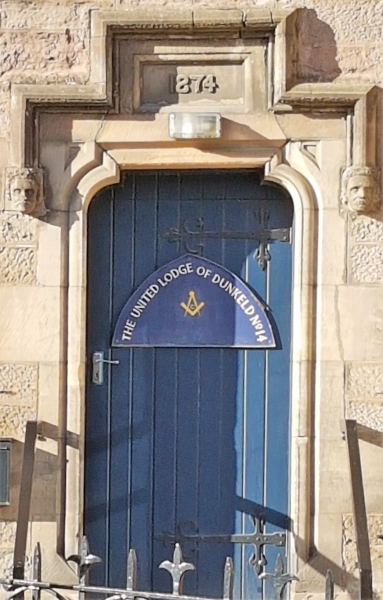
The United Lodge of Dunkeld No. 14 (St John’s Lodge).
IMAGE CREDIT: United Lodge of Dunkeld
At the time of his return to Pitlochry in the early 1880s there was no Masonic Lodge in the town; but on 30 November 1882, Irvine petitioned St John’s Lodge No. 14, Dunkeld for membership, being recommended by Brothers George Dickson and Kenneth McDonald of the ancient Lodge.
He was subsequently initiated on 30 November 1882, and Passed and Raised on 27 December 1882.
The rather unusual circumstance of being given his Second and Third degrees on the same date is acknowledged in the Lodge records: ‘Got two steps in one night as the case was considered by the RWM and his Wardens one of emergency.’
Just what the emergency was is not explained, but clearly there was a desire to have Irvine elevated to full membership of the Lodge as soon as possible.
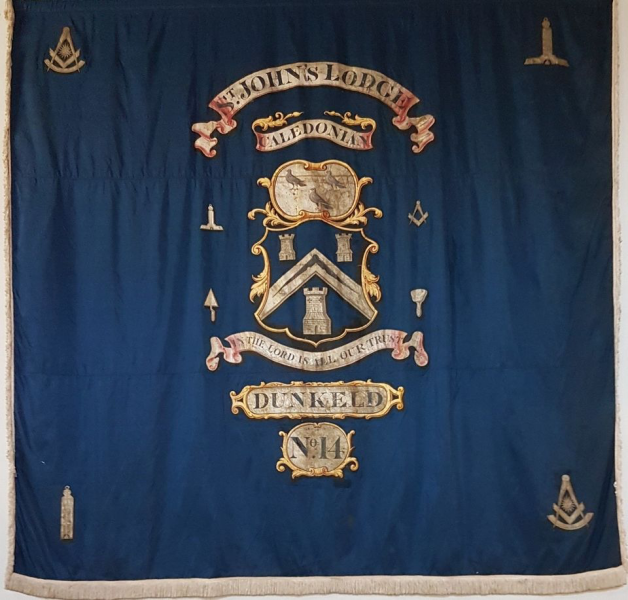
The Lodge banner presented by the 6th Duke of Atholl to St John’s Lodge, Caledonian, Dunkeld, No 14 after his installation in 1841.
IMAGE CREDIT: United Lodge of Dunkeld
On 14 December 1894, a meeting was held within Scotland’s Hotel, Pitlochry among Freemasons who wished to create a Lodge in the town. Lodge Minutes note that Dr R.W. Irvine was called to the chair to preside over this first meeting which was attended by a number of well-known locals, including John Scotland, senior, and John Scotland junior, the proprietors of the hotel in which the meeting took place.
On the instructions of the then Grand Secretary, a standard petition was signed and sent to Colonel M. Stirling, the Provincial Grand Master of Perthshire-West. Irvine was first to sign the petition and the following full list of signatories provides an insight into the various Lodges from which the petitioners came:
R.W. Irvine, St. John’s Lodge, No. 14.
John Scotland, Lodge Scoon & Perth, No. 3.
Wm. Skinner, St. John Kilwinning No. 28, Kirkintilloch.
John Veitch, Lodge Perth Royal Arch No. 122.
George Flight, Lodge Albert No. 448, Lochee.
Angus McLennan, St. John’s Lodge No. 14, Dunkeld.
James Livingston, Lodge Shamrock Thistle, No. 275, Glasgow.
James Burgess, Lodge St. Andrew’s Royal Arch No. 321, Dunbartonshire.
Michael Bruce, St. John’s Lodge No. 14, Dunkeld.
Finlay S. Menzies, Operative Lodge, No. 152, Dunkeld.
Peter Gould, Operative Lodge, No. 152, Dunkeld.
John H. Scotland, Operative Lodge, No. 152, Dunkeld.
Hugh McCallum, St. Stephens Lodge, No. 145, Edinburgh.
A. Robertson, St John’s Lodge, No. 14, Dunkeld.
A further meeting was held in Scotland’s Hotel on the 22 January 1895, and again, Dr R. W. Irvine presided.
It was then decided to call on the petitioners to collect the money to cover the cost of a Charter from the Grand Lodge of Scotland. The raising of money to purchase Working Tools was to be discussed at a future meeting.
Another meeting was held in the hotel on 30 January 1895, with Mr John Scotland (presumably senior) proprietor of the hotel presiding.
At this meeting, it was agreed to appoint a working committee. It was at this meeting that the brethren decided to adopt the Atholl tartan as the colours of the Lodge and of the Lodge regalia.
The office-bearers for the proposed Lodge were decided upon and Dr R.W. Irvine was elected to be the Lodge’s first Substitute-Master.
The Lodge received a charter from the Grand Lodge of Scotland dated 7 February 1895, and held its first meeting within Scotland’s Hotel only four days later on 11 February 1895, with Brother Dr McCallum in the chair for that inaugural meeting.
It was formally moved that the Lodge be named St. Andrew, and it was also at this meeting that Irvine donated the emblems of mortality to the Lodge; very possibly the same emblems in use at the Lodge today. On 7 March 1895, the Lodge was formally erected and consecrated by James St Clair-Erskine, 5th Earl of Rosslyn, Grand Junior Warden of the Grand Lodge of Scotland, acting on behalf of the Grand Master Mason. [1]
The Lodge continued to meet at Scotland’s Hotel for a number of years before moving to its current home at Pitlochry Town Hall.
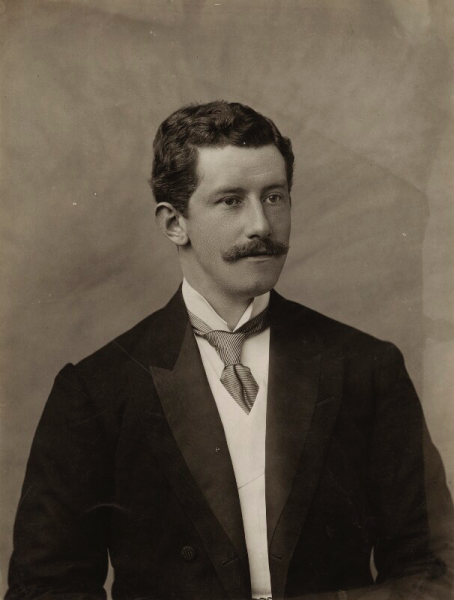
James Francis Harry St Clair-Erskine, 5th Earl of Rosslyn By Alexander Bassano (1829-1913), Photographer. Credit; npg.org.uk
IMAGE LINKED: wikimedia Attribution 4.0 International (CC BY 4.0)
Sadly, Irvine’s association with Lodge St. Andrew No. 814 was to be a short one.
Somewhat paradoxically for someone with such an illustrious athletic history and for one who worked so diligently in a healthcare profession; Irvine had increasingly suffered from growing obesity, a modern day curse.
He took ill and died in 1897, one day short of his 44th birthday; a tragically young age for someone who had contributed so much to society and who could have given so much more.
The fact he was not only a valued member of the fledgling local Masonic Lodge, but also: an ardent supporter and patron of the Vale of Atholl Football Club; secretary of the Pitlochry Highland Games; and a committee member of Pitlochry Curling Club; the passing of ‘Doctor Bob’ as he came to be known locally, was met with deep regret and sadness within the Pitlochry community.
On the day of his funeral, local shops closed in respect, the streets were lined with mourners, and his coffin was relayed from his home successively by his local Lodge brethren; curlers; Foresters; and patients.
The public esteem in which he was held is amply demonstrated by the fact that a large granite Celtic cross headstone was erected to his memory at Dysart Cemetery in Pitlochry, which was financed by public subscription.
With his energy and intellect, it seems highly likely that had he not met with such an early demise, Dr. R. W. Irvine would have gone on to be Master of Lodge St. Andrew No. 814 and possibly much further in Scottish Freemasonry.
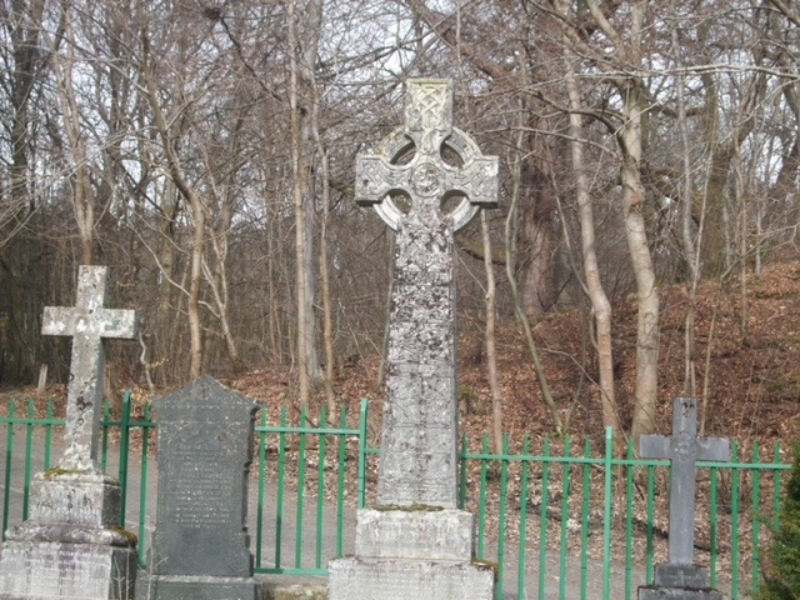
Robert William ‘Bulldog’ Irvine’s headstone
IMAGE CREDIT: Kenneth Jack
The inscription on his headstone reads:
In admiration of his rare professional skill, his great mental gifts; his eloquence, and his wide and varied knowledge. In recognition of his distinction as a manly exponent of our national athletic recreations, and in loving testimony to his kindness of heart and his ever ready and helpful sympathy with the poor of the district.
AIG FOIS (AT PEACE)
Indeed, he lived respected, and died regretted.
Little known as a Freemason, Dr Robert William Irvine remains a Scottish rugby legend, and his feat of appearing in 10 consecutive international matches against England has only been surpassed once in 140 years by Sandy Carmichael.
Footnotes
References
[1] The 5th Earl of Rosslyn – James Francis Harry St. Clair-Erskine – was known as ‘a man about town’; he was a profligate, and an inveterate gambler, who eventually squandered the family fortune. He was declared a bankrupt in 1897, which effectively ended any aspirations he held to emulate his father by becoming Grand Master Mason of Scotland. It also prohibited him from taking his seat in the House of Lords; and he was the first hereditary peer to take to the stage as an actor to earn a living. Rosslyn acknowledged his shortcomings and summarised his frustrated Masonic career in his 1928 autobiography ‘My Gamble with Life’, a title which neatly summed things up: –
‘In order to keep myself as much out of mischief as possible, I took up Freemasonry very keenly. Not only did I attend my mother lodge, 520 Dysart, and occupy the Chair one year, but I joined Provincial Grand Lodge and in 1894 succeeded J.H. Balfour as Provincial Grand Master, being succeeded in 1898 by the best of fellows, Jim Cathcart of Pitcairlie. I was also a member of Grand Lodge of Scotland, acting as Grand Junior Warden from 1894 to 1896 and Grand Senior Warden from 1896 to 1898. I had thirty lodges to visit in the Kingdom of Fife, almost invariably in the dark winter evenings, before motors were heard of sometimes, owing to distance having to sleep out. But here came the foundation of my desire to raise myself, like the Phoenix, from the ashes of the past. I was meeting the real people who counted, the masses to whom Freemasonry in Scotland belonged, and who only wanted leaders to help them to throw out the olive branch of good fellowship to those who, like myself, had been standing too long aloof from them.
‘Those evenings begun in ‘labour’ (examining accounts), ended in speeches, song and conviviality, a desire of each lodge to make their guests at home, and you may believe me I was not slow to respond. The greatest of all charitable institutions in the world cannot be considered only from its £. s.d. side. It must be reckoned with chiefly from its spirit of comradeship. In England, the fees in those days were £2 2 shillings a year- beyond the possibility of the working-man. In Scotland, the dues were 1 shilling, and every man could afford that sum. I suppose, in fact I have the right to believe, that I should shortly after 1898 have succeeded to the Grand Mastership of Scotland, but for the fatal financial crash that deprived me of that honour. It is not generally known that William St. Clair of Roslin, whose memory is always toasted in silence on St. Andrew’s Day, was with his heirs made hereditary Grand Master of Scotland by James VI of Scotland; but he with just prudence asked to be elected by his brethren, an act readily accorded him.’
‘During my tenancy of office in Grand Lodge, I served under Lord Haddington, Sir Charles Dalrymple Bart., M.P., and Lord Saltoun. I fear I incurred the latter’s wrath at a meeting of Grand Lodge by taking the views of a large body of the members instead of supporting the Chair in what I considered was an entirely wrong decision. I heard of it later when Sir Charles Dalrymple very kindly installed me as Provincial Grand Master of Fife on June 19, 1897, in the beautiful chapel at Roslin. It was a great occasion, a special train bringing Fife masons, whilst most office bearers of Grand Lodge were present. In his address to me and the 300 who were crammed into the chapel, the late Sir Charles Dalrymple, a very charming man, rapped me on the knuckles by reminding us that it was the duty of everyone to support the Chair, a view which is not so seriously believed in at the present day! Two men in Grand Lodge stand out forcibly in my mind: the late David Murray Lyon, who was Grand Secretary from 1877 to 1900, and David Reid, still, I am glad to say, in the land of the living, who from Grand Treasurer succeeded Lyon as Grand Secretary, and retired only as recently as last year (1926).’
‘Of individual Fife masons, it is impossible to write-there were too many-nor would it be right to differentiate between men who only meet upon the square and the level. Two incidents of Masonic interest I recollect, first as Grand Junior Warden helping to lay the foundation stone of the North Bridge in Edinburgh on May 25, 1896, and secondly laying the foundation stone of the Kirkcaldy fever Hospital on Jubilee Day of the following year. I hope some day the opportunity and the desire will again arise and I may once more become an active member of Grand Lodge of Scotland.’
Elsewhere in the book, he briefly and rather wistfully summarises his father’s more successful involvement with the Scottish craft:
‘My father was also a great Freemason, being Grand Master of Scotland in the years 1870 to 1872, and his popularity was so great that in my younger days I heard many anecdotes of his wonderful charm and personality.’
Article by: Kenneth C. Jack
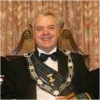
Kenneth C. Jack FPS is an enthusiastic Masonic researcher/writer from Highland Perthshire in Scotland.
He is Past Master of a Craft Lodge, Past First Principal of a Royal Arch Chapter, Past Most-Wise Sovereign of a Sovereign Chapter of Princes Rose Croix.
He has been extensively published in various Masonic periodicals throughout the world including: The Ashlar, The Square, The Scottish Rite Journal, Masonic Magazine, Philalethes Journal, and the annual transactions of various Masonic bodies.
Kenneth is a Fellow of the Philalethes Society, a highly prestigious Masonic research body based in the USA.
Recent Articles: Kenneth C. Jack
 Observations on the History of Masonic Research Archaeology is often associated with uncovering ancient tombs and fossilized remains, but it goes beyond that. In a Masonic context, archaeology can be used to study and analyze the material culture of Freemasonry, providing insight into its history and development. This article will explore the emergence and evolution of Masonic research, shedding light on the challenges faced by this ancient society in the modern world. |
 Anthony O'Neal Haye – Freemason, Poet, Author and Magus Discover the untold story of Anthony O’Neal Haye, a revered Scottish Freemason and Poet Laureate of Lodge Canongate Kilwinning No. 2 in Edinburgh. Beyond his Masonic achievements, Haye was a prolific author, delving deep into the history of the Knights Templar and leaving an indelible mark on Scottish Freemasonry. Dive into the life of a man who, despite his humble beginnings, rose to prominence in both Masonic and literary circles, leaving a legacy that continues to inspire. |
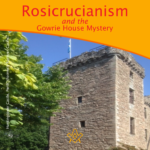 Rosicrucianism and the Gowrie House Mystery Unearth the mystifying intersections of Rosicrucianism and the infamous Gowrie House Mystery. Dive into speculative claims of sacred knowledge, royal theft, and a Masonic conspiracy, harking back to a fateful day in 1600. As we delve into this enthralling enigma, we challenge everything you thought you knew about this historical thriller. A paper by Kenneth Jack |
 Thomas Telford's Masonic Bridge of Dunkeld Of course, there is no such thing as a ‘Masonic Bridge’; but if any bridge is deserving of such an epithet, then the Bridge of Dunkeld is surely it. Designed by Scotsman Thomas Telford, one of the most famous Freemasons in history. |
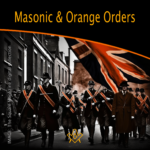 The masonic and orange orders: fraternal twins or public misperception? “Who’s the Mason in the black?” |
 Kenneth Jack's research reveals James Murray, 2nd Duke of Atholl – the 'lost Grand Master' |
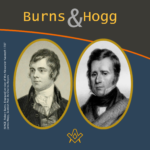 An Oration delivered to the Annual Burns and Hogg Festival, at Lodge Canongate Kilwinning, No. 2, Edinburgh, on 24 January 2018. By Bro. Kenneth C. Jack, FSAScot FPS, Past Master, Lodge St. Andrew, No. 814, Pitlochry. |
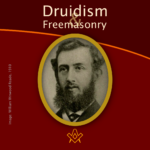 William Winwood Reade was a Scottish philosopher, historian, anthropologist, and explorer born in Crieff, Perthshire, Scotland. The following article by Kenneth Jack, provides some hints that William may have been a Freemason, but there is presently no definitive evidence he was. |
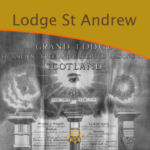 What's in a name? A brief history of the first Scottish Lodge in Australia - By Brother Kenneth C. Jack, Past Master, Lodge St. Andrew, No. 814, Pitlochry |
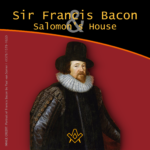 Sir Francis Bacon and Salomon’s House Does Sir Francis Bacon's book "The New Atlantis" indicate that he was a Rosicrucian, and most likely a Freemason too? Article by Kenneth Jack |
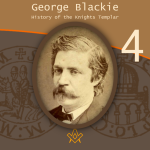 George Blackie – The History of the Knights Templar P.4 The final part in the serialisation of George Blackie's 'History of the Knights Templar and the Sublime Teachings of the Order' transcribed by Kenneth Jack. |
 George Blackie – The History of the Knights Templar P.3 Third part in the serialisation of George Blackie's 'History of the Knights Templar and the Sublime Teachings of the Order' transcribed by Kenneth Jack. |
 George Blackie – The History of the Knights Templar P.2 Second part in the serialisation of George Blackie's 'History of the Knights Templar and the Sublime Teachings of the Order' transcribed by Kenneth Jack. |
 George Blackie – The History of the Knights Templar P.1 First part in the serialisation of George Blackie's History of the Knights Templar and the Sublime Teachings of the Order – by Kenneth Jack |
 Little known as a Freemason, Bro Dr Robert ‘The Bulldog’ Irvine remains a Scottish rugby legend, and his feat of appearing in 10 consecutive international matches against England has only been surpassed once in 140 years by Sandy Carmichael. |
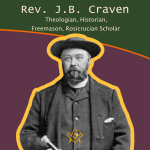 Rev. J.B. Craven: Theologian, Historian, Freemason, And Rosicrucian Scholar Archdeacon James Brown Craven is one of those unsung heroes of Scottish Freemasonry about whom very little has been previously written – here Kenneth Jack explores the life and works of this remarkable esoteric Christian. |
 Discover the powerful family of William Schaw, known as the 'Father of Freemasonry' |
 This month, Kenneth Jack invites us to look at the life of Sir William Peck; - astronomer, Freemason and inventor of the world's first electric car. A truly fascinating life story. |
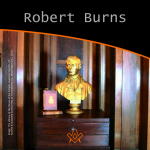 A Tribute to Scotland's Bard – The William Robertson Smith Collection With Burns' Night approaching, we pay tribute to Scotland's most famous Bard – The William Robertson Smith Collection |
 The Joy of Masonic Book Collecting Book purchasing and collecting is a great joy in its own right, but when a little extra something reveals itself on purchase; particularly with regards to older, rarer titles.. |
 Masons, Magus', and Monks of St Giles - who were the Birrell family of Scottish Freemasonry? |
 The 6th Duke of Atholl - Chieftain, Grand Master, and a Memorial to Remember In 1865, why did over 500 Scottish Freemasons climb a hill in Perthshire carrying working tools, corn, oil and wine? Author Kenneth Jack retraces their steps, and reveals all. |
 Charles Mackay: Freemason, Journalist, Writer Kenneth Jack looks at life of Bro Charles Mackay: Freemason, Journalist, Writer, Poet; and Author of ‘Tubal Cain’. |
 A Mother Lodge and a Connection Uncovered, a claim that Sir Robert Moray was the first speculative Freemason to be initiated on English soil. |
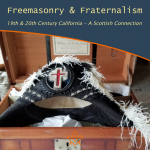 What is it that connects a very old, well-known Crieff family, with a former President of the United States of America? |
 The life of Bro. Cattanach, a theosophist occultist and Scottish Freemason |
 The Mysterious Walled Garden of Edzell Castle Explore the mysterious walled garden steeped in Freemasonry, Rosicrucianism, and Hermeticism. |
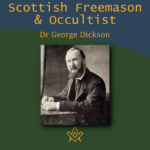 Dr. George Dickson: Scottish Freemason and Occultist Bro. Kenneth explores the life of Dr George Dickson a Scottish Freemason and Occultist |
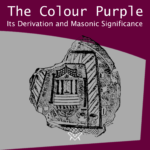 The Colour Purple - Its Derivation and Masonic Significance What is the colour purple with regards to Freemasonry? The colour is certainly significant within the Royal Arch series of degrees being emblematical of Union. |
 Bridging the Mainstream and the Fringe Edward MacBean bridging mainstream Freemasonry with the fringe esoteric branches of Freemasonry |
 Freemasonry in the Works of John Steinbeck We examine Freemasonry in the Works of John Steinbeck |
 Renegade Scottish Freemason - John Crombie Who was John Crombie and why was he a 'renegade'? |
 Scottish Witchcraft And The Third Degree How is Witchcraft connected to the Scottish Third Degree |
masonic knowledge
to be a better citizen of the world
share the square with two brothers

click image to open email app on mobile device
